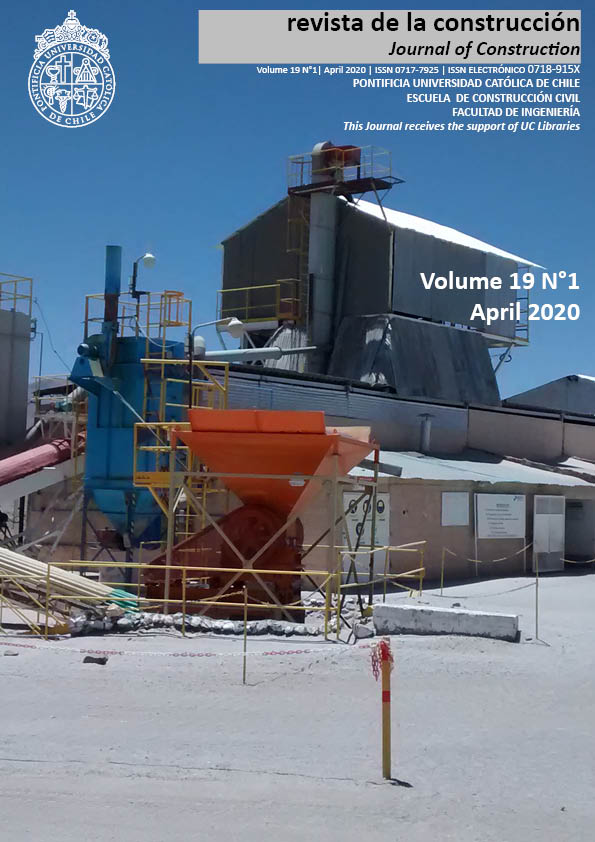Influence of the molding process and different surface regularization methods on the compressive strength of concrete specimens
DOI:
https://doi.org/10.7764/RDLC.19.1.159-169Keywords:
Concrete, Casting, Surface treatment, Compressive strengthAbstract
Concrete is one of the most important material for civil construction, given its high applicability. C Compressive strength (fc) is one of the main parameters to evaluate the concrete quality. Concrete of the same mixing volume may vary even with the same materials preparation. Concrete specimens molding, and its surface regularization contribute to these variations that are often hard to measure. Therefore, this paper aims to determine the variations in compressive strength of concrete, simulating different processes for casting, initial curing and surface treatment. In stage 1, the specimens were subjected to five surface treatment types, resulting in variations of 30% for concrete fc, whereas grinding specimens reached the highest 28-day compressive strength, so they were carried over to the next stage. In stage 2, specimens were produced as per ABNT NBR 5738 (2015) and with induced errors in casting and initial curing. The specimen produced according to the standard achieved the second-best result, whose 28-day fc was3% lower than that of the similar method, despite leaving the specimen uncovered for the first 24 hours after casting. Specimens produced in metal cylinder form works shows higher results than those produced in polyvinyl chloride molds (PVC).








